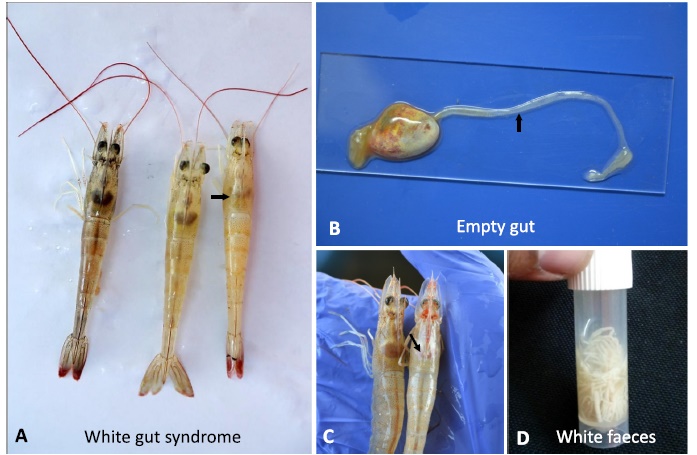Navaneeth Krishnan Areekkal, Jagadeesan Vengatesan, Biju Irumban Francis, Ezhil Praveena Peter, Bhuvaneswari Thangavelu, Jithendran Karingalakkandy Poochirian
A B S T R A C T
Ecytonucleospora hepatopenaei (previously known as Enterocytozoon hepatopenaei) abbreviated as EHP, is an emerging microsporidian parasite in several shrimp farming countries, including Thailand, Vietnam, Malaysia, Indonesia, China and India, and is associated with severe growth retardation and heavy production loss. Currently, EHP is known to infect Penaeus monodon, P. vannamei and is suspected to infect P. japonicus also. In this study, the susceptibility of five different penaeid shrimp species; viz., P. vannamei, P. monodon, P. indicus, P. japonicus and Metapenaeus monoceros to EHP in natural and experimental set up was carried out. Natural susceptibility of these species was evaluated by non-lethal screening of wild-caught broodstock shrimp except the imported specific pathogen free P. vannamei. All the native broodstock species sourced from the wild, were negative for EHP, whereas three specimens of imported P. vannamei broodstock out of 350 (0.85 %) tested EHPpositive by PCR. Controlled experimental infection of EHP in naive shrimps through per os feeding of EHPinfected hepatopancreas indicated that all five species are susceptible to challenge infections and the first detection was possible in faecal samples within 5–7 days post infection (dpi). Out of 20 shrimps per test group, nearly 50 % animals were EHP-positive within 15 days and 100 % within 18 dpi during 30 days of experimental trial without any specific clinical symptoms for EHP. It could therefore be concluded that the infection status was not influenced either by species, sex, body weight or stock. Further, experimental infection of EHP did not initiate any pathognomonic symptoms in these species as the characteristic white faeces syndrome (WFS) with milky white colouration was not discernible in any of the experimentally infected shrimp. Histological evaluation
in all shrimp of the test groups revealed basophilic round bodies in hepatopancreas tubule epithelial cells in which EHP was observed at various developmental stages ranging from plasmodia to mature spores scattered in the lumen in advanced stages of infection.
